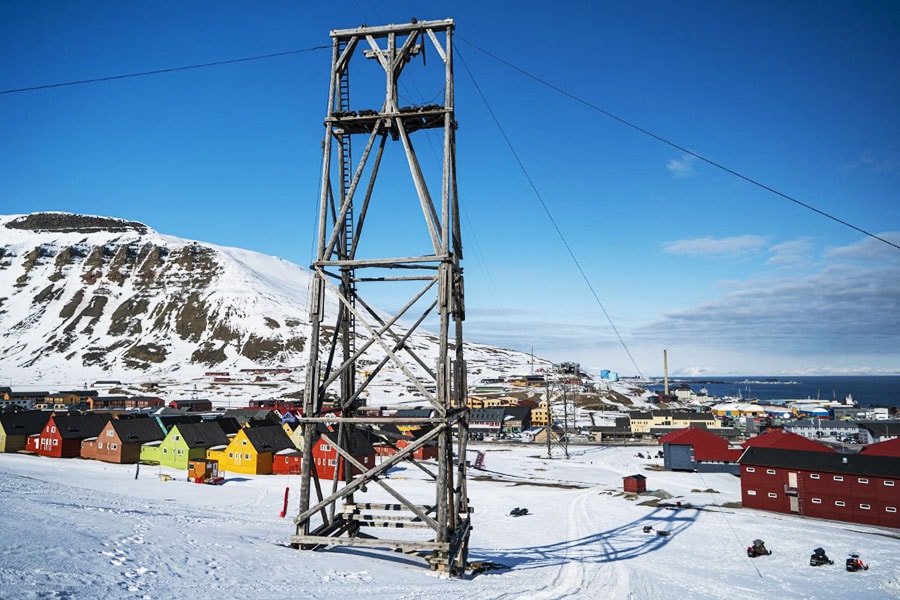
Warming climate upends Arctic mining town
In Svalbard, climate change has meant shorter winters; temperatures that yo-yo; more frequent precipitation, increasingly in the form of rain; and thawing permafrost—all conditions that increase the risk of avalanches and landslides
 Conveyor towers once used for transporting coal from the mines to the harbour, are pictured in Longyearbyen on May 6, 2022, on the Svalbard Archipelago, northern Norway.
Image: Jonathan Nackstrand / AFP
Conveyor towers once used for transporting coal from the mines to the harbour, are pictured in Longyearbyen on May 6, 2022, on the Svalbard Archipelago, northern Norway.
Image: Jonathan Nackstrand / AFP
Longyearbyen, Norway: Tor Selnes owes his life to a lamp. He miraculously survived a fatal avalanche that shed light on the vulnerability of Svalbard, a region warming faster than anywhere else, to human-caused climate change.
On the morning of December 19, 2015, the 54-year-old school monitor was napping at home in Longyearbyen, the main town in the Norwegian archipelago halfway between mainland Norway and the North Pole.
Suddenly, a mass of snow hurtled down from Sukkertoppen, the mountain overlooking the town, taking with it two rows of houses.
Selnes' home was swept away 80 metres (263 feet). The room where he was sleeping was completely demolished amid "a scraping sound like metal against a road".
To avoid being buried under the snow, he grabbed onto a ceiling lamp.







